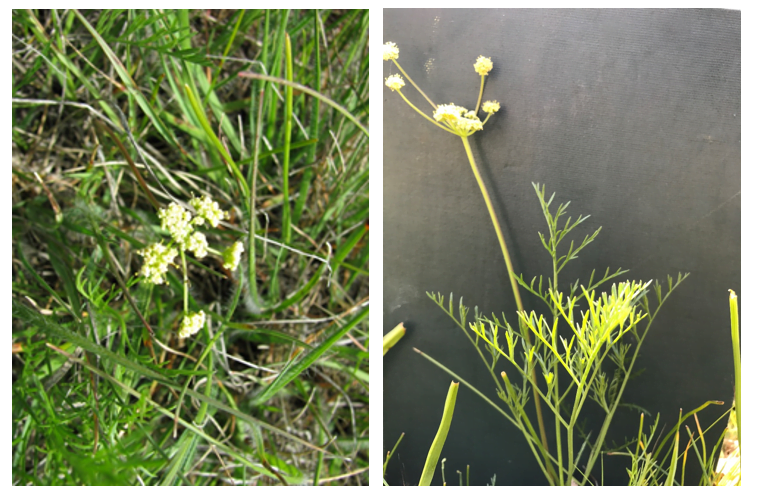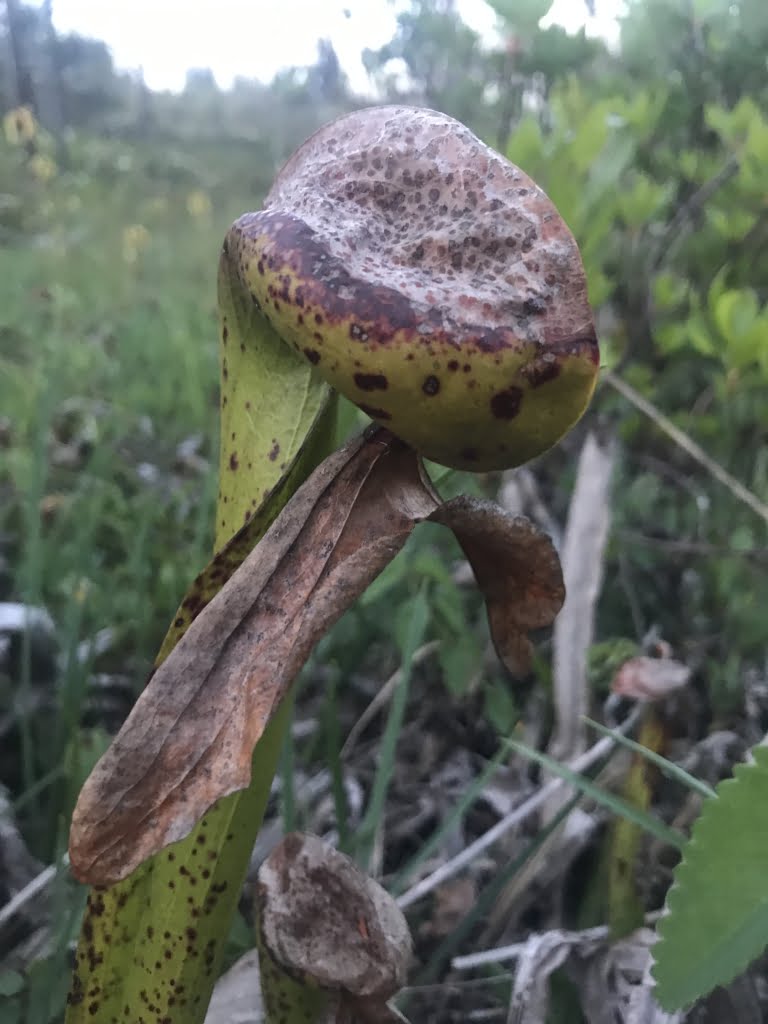
Going loco searching for LOCO!
–By Lucy Keehn
We have had many adventures during our Native Plant Society of Oregon internship. In the first week of May, our crew rapidly expanded from the usual 5 to a lively 16, as we were joined in the field by our Executive Director, Tom Kaye, and 10 volunteers from all over Oregon, in order to monitor the population of the endangered Cook’s Desert Parsley (Lomatium cookii), also refereed to as LOCO. Cook’s Desert Parsley is closely related to Lomatium bradshawii, which is an endangered Apiaceae found only in the Willamette Valley. The Institute for Applied Ecology (IAE) has been involved with monitoring the species, habitat, and community at this location for more than 20 years, in partnership with the Medford Bureau of Land Management (BLM) District. It was exciting to be able to contribute to such a long-lasting project that so many people have invested much time and care.

We worked in the Illinois Flats, one of the remaining two population centers of the endangered Cook’s Desert Parsley (the other is north of Medford Plains) (Kagan, 1994). Cook’s Desert Parsley is a small and inconspicuous plant when not flowering; its leaves are narrow and compoundly divided, easily hiding among surrounding vegetation.

The vegetation can be so hard to find, it often means monitoring on your hands and knees with your nose almost in the soil. Sometimes it would take waiting for a small breeze to reveal the hidden Cook’s lomatium, which dips and bends in the wind in contrast to the shaking grasses. Besides being glad to see healthy reproductive plants, we were happy that the creamy yellow umbels made the plants much easier to spot! Thankfully, the icy Illinois River, Deer Creek, and the Cave Junction Dairy Queen were nearby to reward the hot search with a cold treat!

We took a field trip one evening to see the Darlingtonia californica in bloom at 8 Mile Mountain; definitely a highlight of this summer. These incredible carnivorous plants grow in the slowly flowing water of the fen and source nutrients from the rotting insects that fall into their hollow stalk. The insects are lured into the hood by the light shining through the translucent “windows” in the ceiling of hood. Confused by the light, they tumble into the stalk where small downward-pointing hairs prevent them from escaping. The flower of the Darlingtonia is one of the most menacing I have ever seen- the drooping dark purplish-red petals enclosed by large yellow sepals definitely looked the part of a carnivorous plant!


This trip was a great opportunity to tap the impressive collective knowledge of the volunteer crew; we learned from the birding expertise of Marcia, Marisa and Sandy, about Oregon botany from Cindy and our BLM partner Julie, about distance biking in Oregon from the power-couple Wendie and Mike, and about the power of enthusiasm and good vibes from Don. Of course, we also all learned about how to relax at the Siskiyou Field Institute like a true “Duke” from the John Wayne cutout! Thanks to all of the volunteers who endured the heat with us, and to the Siskiyou Field Institute for hosting us at such a beautiful base-camp!
Gallery
Restoration
Research
Education
Contact
Main Office:
4950 SW Hout Street
Corvallis, OR 97333-9598
541-753-3099
info@appliedeco.org
Southwest Office:
1202 Parkway Dr. Suite B
Santa Fe, NM 87507
(505) 490-4910
swprogram@appliedeco.org
© 2025 Institute for Applied Ecology | Privacy Policy
